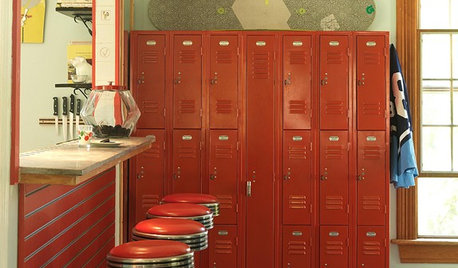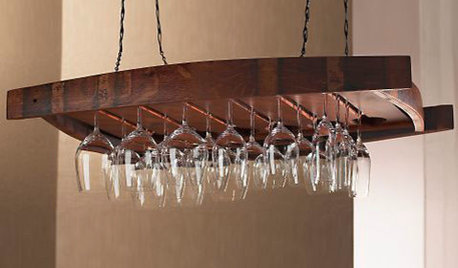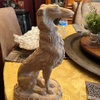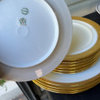Jerome & Co. clock
socks
12 years ago
Related Stories

COLORS OF THE YEARPantone Has Spoken: Rosy and Serene Are In for 2016
For the first time, the company chooses two hues as co-colors of the year
Full Story
KITCHEN DESIGNSchoolhouse Style Rocks in the Kitchen
Which class-y idea suits your kitchen best? a) a vintage clock; b) storage lockers; c) chalkboard counters; d) all of the above
Full Story
BATHROOM DESIGNWater Damage Spawns a Space-Saving Bathroom Remodel
A game of inches saved this small New York City bathroom from becoming too cramped and limited
Full Story
DECORATING GUIDESSee a Seattle-Area Home Steeped in Graciousness
Brimming with welcoming touches, this condo shows that a home short on space and decorating funds can still go long on personal style
Full Story
PRODUCT PICKSGuest Picks: Upcycled Wine Barrels
Raise a glass to vineyard style with furniture, lighting and accessories repurposed from wooden wine barrels
Full Story
BEDROOMS7 Tips for Placing a Bed in Front of a Window
Whether it's the only option or just the best one, here's what to do with a window behind the bed
Full Story
KITCHEN OF THE WEEKKitchen of the Week: A Minty Green Blast of Nostalgia
This remodeled kitchen in Chicago gets a retro look and a new layout, appliances and cabinets
Full Story
ROOM OF THE DAYRoom of the Day: A Dreamy Boho Bedroom for Tweens
Parents create a magical and cozy bedroom for their daughters with built-ins, fabric, lighting and more
Full Story











lindac
calliope
Related Professionals
Owensboro Furniture & Accessories · Woodstock Furniture & Accessories · Eau Claire Furniture & Accessories · Farmington Furniture & Accessories · Mahwah Furniture & Accessories · Arlington Painters · Durham Painters · Fountain Painters · Kenosha Painters · Seekonk Painters · Shaker Heights Painters · Wilmette Painters · East Grand Rapids Painters · Carpinteria Furniture & Accessories · Cockeysville Professional Organizerspamghatten
jemdandy
jemdandy
socksOriginal Author